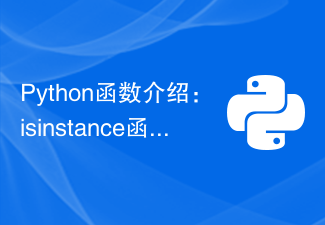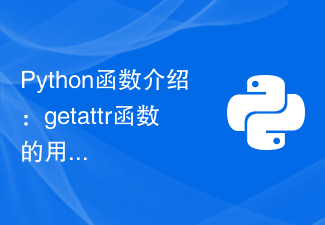 Web Front-end
Web Front-end HTML Tutorial
HTML Tutorial An in-depth exploration of virtual selectors: revealing the principles and usage of commonly used selectors
An in-depth exploration of virtual selectors: revealing the principles and usage of commonly used selectors
Revealing the secrets of virtual selectors: analyzing the working principles and usage of commonly used selectors
Introduction:
In front-end development, CSS selectors are Very important part. It can help us locate the HTML elements that need to be manipulated and apply styles to them. Virtual selectors, as a special form of CSS selectors, have more powerful functions and flexibility. This article will reveal how virtual selectors work and how they are commonly used.
1. What is a virtual selector?
Virtual selectors (Pseudo-Selectors) are a special form of CSS selectors, used to perform special filtering or special filtering on elements when they are selected. operate. A virtual selector starts with a colon (:) and represents the selection of a pseudo-class state or other attributes of the element.
The virtual selector is set by adding a pair of colons and the corresponding pseudo-class after the selector. For example, :hover represents the state when the mouse is hovering over the element. Common virtual selectors include:hover, :active, :focus, :first-child, etc.
Virtual selectors select or operate elements by judging the element status or other attributes. By flexibly using virtual selectors, we can achieve more precise style control and interaction effects.
2. The working principle and usage of commonly used virtual selectors
- :hover
:hover virtual selector is used to select the element when the mouse is hovering status at the time. A mouseover effect can be achieved by adding specific styles to the selected element.
- :active
:active virtual selector is used to select the state when the mouse clicks the element. By adding a specific style to the selected element, you can achieve the effect when the element is clicked.
- :focus
:The focus virtual selector is used to select the currently focused element. Generally used for form elements. When the user clicks on the form element, the element gets focus. By adding specific styles to the focused element, you can achieve interactive effects or indicate the user's current location.
- :first-child
:first-child virtual selector is used to select the first child element under the parent element. By setting :first-child, you can style the first child element individually, for example by setting its font color to be different from other child elements.
- :nth-child
:nth-child virtual selector is used to select the nth child element under the parent element. By setting :nth-child(n), the child element at a specific position can be selected. For example, setting: nth-child(2n) can select even-numbered child elements under the parent element.
- ::before and ::after
The::before and ::after virtual selectors are used to insert content before and after the content of an element. By setting ::before and ::after, you can insert specific content, such as icons, backgrounds, etc., before and after the element.
- :not
: The not virtual selector is used to select elements that do not match the specified selector. By setting:not(selector), you can exclude certain elements and achieve more precise selection.
- :checked
:checked The virtual selector is used to select the selected (ie checked) form element. By setting: checked, you can switch the style between selected and unselected states.
Summary:
Virtual selectors are a powerful and indispensable part of CSS selectors. They can accurately select and operate elements by judging the element status or other attributes. Common virtual selectors such as :hover, :active, :focus, etc. can achieve various interactive effects and style control. Proper use of virtual selectors can make pages more attractive and operable. In actual development, it is necessary to select an appropriate virtual selector based on actual needs and flexibly use its features to achieve the best user experience and visual effects.
The working principle and usage examples of virtual selectors have been analyzed in this article, hoping to help readers better understand and apply virtual selectors. Through in-depth study and practice, I believe you can flexibly use virtual selectors in front-end development to achieve various cool effects.
The above is the detailed content of An in-depth exploration of virtual selectors: revealing the principles and usage of commonly used selectors. For more information, please follow other related articles on the PHP Chinese website!
 解析JSP注释的使用方法和分类Feb 01, 2024 am 08:01 AM
解析JSP注释的使用方法和分类Feb 01, 2024 am 08:01 AMJSP注释的分类及用法解析JSP注释分为两种:单行注释:以结尾,只能注释单行代码。多行注释:以/*开头,以*/结尾,可以注释多行代码。单行注释示例多行注释示例/**这是一段多行注释*可以注释多行代码*/JSP注释的用法JSP注释可以用来注释JSP代码,使其更易于阅
 如何正确使用C语言的exit函数Feb 18, 2024 pm 03:40 PM
如何正确使用C语言的exit函数Feb 18, 2024 pm 03:40 PMc语言exit函数怎么用,需要具体代码示例在C语言中,我们常常需要在程序中提前终止程序的执行,或者在某个特定的条件下退出程序。C语言提供了exit()函数来实现这个功能。本文将介绍exit()函数的用法,并提供相应的代码示例。exit()函数是C语言中的标准库函数,它包含在头文件中。它的作用是终止程序的执行,并且可以带一个整型
 Python函数介绍:abs函数的用法和示例Nov 03, 2023 pm 12:05 PM
Python函数介绍:abs函数的用法和示例Nov 03, 2023 pm 12:05 PMPython函数介绍:abs函数的用法和示例一、abs函数的用法介绍在Python中,abs函数是一个内置函数,用于计算给定数值的绝对值。它可以接受一个数字参数,并返回该数字的绝对值。abs函数的基本语法如下:abs(x)其中,x是要计算绝对值的数值参数,可以是整数或浮点数。二、abs函数的示例下面我们将通过一些具体的示例来展示abs函数的用法:示例1:计算
 Python函数介绍:isinstance函数的用法和示例Nov 04, 2023 pm 03:15 PM
Python函数介绍:isinstance函数的用法和示例Nov 04, 2023 pm 03:15 PMPython函数介绍:isinstance函数的用法和示例Python是一门功能强大的编程语言,提供了许多内置函数,使得编程变得更加方便和高效。其中一个非常有用的内置函数是isinstance()函数。本文将介绍isinstance函数的用法和示例,并提供具体的代码示例。isinstance()函数用于判断一个对象是否是指定的类或类型的实例。该函数的语法如下
 使用苹果快捷指令的方法Feb 18, 2024 pm 05:22 PM
使用苹果快捷指令的方法Feb 18, 2024 pm 05:22 PM苹果快捷指令怎么用随着科技的不断发展,手机已经成为了人们生活中不可或缺的一部分。而在众多手机品牌中,苹果手机凭借其稳定的系统和强大的功能一直备受用户的喜爱。其中,苹果快捷指令这一功能更是让用户们的手机使用体验更加便捷和高效。苹果快捷指令是苹果公司为其iOS12及更高版本推出的一项功能,通过创建和执行自定义指令,帮助用户简化手机操作流程,以达到更高效的工作和
 教你使用Win10的快捷键Dec 30, 2023 am 11:32 AM
教你使用Win10的快捷键Dec 30, 2023 am 11:32 AMwindows10常用快捷键可以为我们省去很多的时间,今天给大家介绍一些常用的快捷键用法,非常的方便快捷,下面一起来看看具体的使用方法吧。Win10快捷键用法介绍复制、粘贴和其他常规键盘快捷方式按此键执行此操作Ctrl+X剪切选定项Ctrl+C(或Ctrl+Insert)复制选定项Ctrl+V(或Shift+Insert)粘贴选定项Ctrl+Z撤消操作Alt+Tab在打开的应用之间切换Alt+F4关闭活动项,或者退出活动应用Windows徽标键+L锁定电脑Windows徽标键+D显示和隐藏桌面F
 解析SQL中使用distinct关键字Feb 18, 2024 pm 09:21 PM
解析SQL中使用distinct关键字Feb 18, 2024 pm 09:21 PMSQL中distinct用法详解在SQL数据库中,我们经常会遇到需要去除重复数据的情况。此时,我们可以使用distinct关键字,它能够帮助我们去除重复数据,使得查询结果更加清晰和准确。distinct的基本使用方法非常简单,只需要在select语句中使用distinct关键字即可。例如,以下是一个普通的select语句:SELECTcolumn_name
 Python函数介绍:getattr函数的用法和示例Nov 04, 2023 pm 01:39 PM
Python函数介绍:getattr函数的用法和示例Nov 04, 2023 pm 01:39 PMPython函数介绍:getattr函数的用法和示例在Python中,getattr()是一个内置函数,用于获取对象的属性值。在不知道对象的属性名称的情况下,可以使用getattr()函数来动态地访问属性。本文将介绍getattr()函数的语法、用法和示例。getattr()函数的语法如下:getattr(object,name[,default])参数


Hot AI Tools

Undresser.AI Undress
AI-powered app for creating realistic nude photos

AI Clothes Remover
Online AI tool for removing clothes from photos.

Undress AI Tool
Undress images for free

Clothoff.io
AI clothes remover

AI Hentai Generator
Generate AI Hentai for free.

Hot Article

Hot Tools

Dreamweaver CS6
Visual web development tools

WebStorm Mac version
Useful JavaScript development tools

Zend Studio 13.0.1
Powerful PHP integrated development environment

SAP NetWeaver Server Adapter for Eclipse
Integrate Eclipse with SAP NetWeaver application server.

Safe Exam Browser
Safe Exam Browser is a secure browser environment for taking online exams securely. This software turns any computer into a secure workstation. It controls access to any utility and prevents students from using unauthorized resources.




